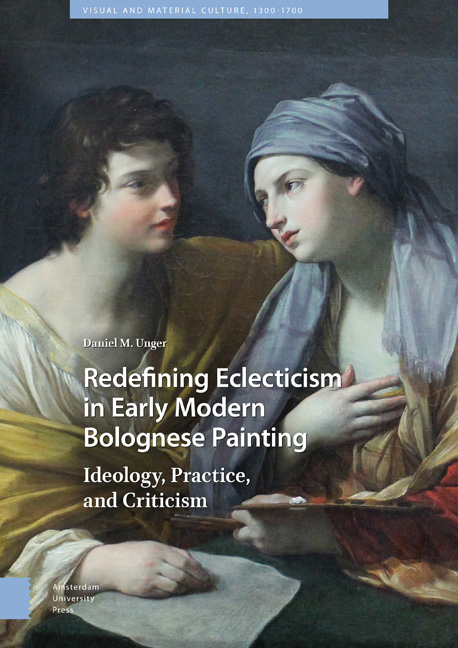Epilogue: Eclecticism in a Roman Chapel
Published online by Cambridge University Press: 21 November 2020
Summary
Abstract
The Epilogue will address an example of non-assimilated eclecticism in a Roman chapel, where a conscious attempt was made to integrate the works of two painters— Annibale Carracci and Caravaggio—into a single set of decorations in the Cerasi Chapel. As this chapter will show, the combination of Annibale's and Caravaggio’s different styles served to elucidate the narrative and meaning of the entire chapel.
Keywords: Cerasi, Caravaggio, St. Peter, St. Paul, Annibale Carracci
Paleotti's attempt to lay down the rules for the creation of religious art did not stop in Bologna. According to Prodi, Paleotti continued to advocate a reform in religious painting even after he moved to Rome, up until his death in 1597. Three years earlier, in 1594, his book Discorso intorno alle imagini sacre et profane diviso in cinque Libri was published in Latin as De imaginibus sacris et prophanis libri quinque, making it accessible to readers outside Italy. In 1596, he became the protector (in charge of the visual reform) of the Accademia di San Luca in Rome, together with Cardinal Francesco Maria del Monte, the well-known patron of Caravaggio. In the summer of the same year, he delivered to Pope Clement VIII a memorandum, titled De tollendis imaginum abusibus novissima consideration (A fresh consideration of how to remove the abuses of images), in which he demanded much stricter supervision of religious paintings and suggested the compilation of an index of prohibited images. Yet it seems that although the ideas reflected in his treatise were appreciated, they did not create the desired effect of anchoring religious art in a restricted set of laws.
The extent to which Paleotti's ideas were received in early seventeenth-century Rome remains unclear. It is safe to speculate that in the case of the religious artworks commissioned for public spaces like churches, the patrons did not pursue Paleotti’s doctrine. One example in which an eclectic approach is evident in Rome may be found in Marchese Vincenzo Giustiniani's palace. Giustiniani's stylistic approach can be gleaned from his famous letter to the Flemish poet Teodoro Amayden, who lived in Rome, which was written c. 1620. In this letter, Giustiniani expressed his thoughts on art and elaborated on the different methods of painting, dividing them into twelve categories.
- Type
- Chapter
- Information
- Redefining Eclecticism in Early Modern Bolognese PaintingIdeology, Practice, and Criticism, pp. 209 - 224Publisher: Amsterdam University PressPrint publication year: 2019



